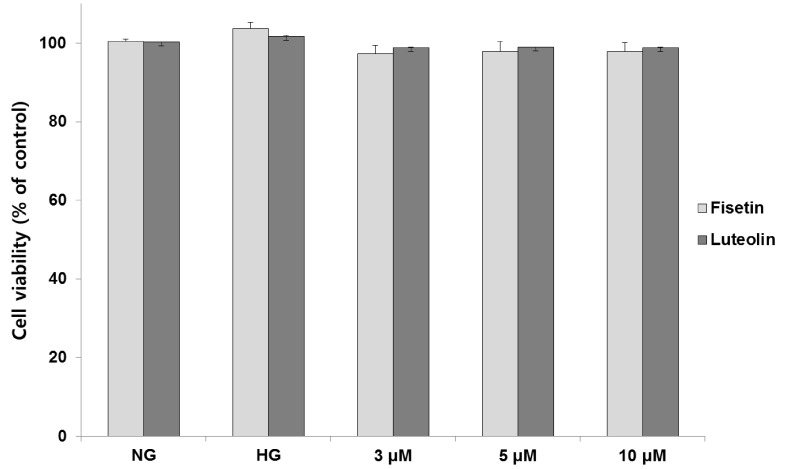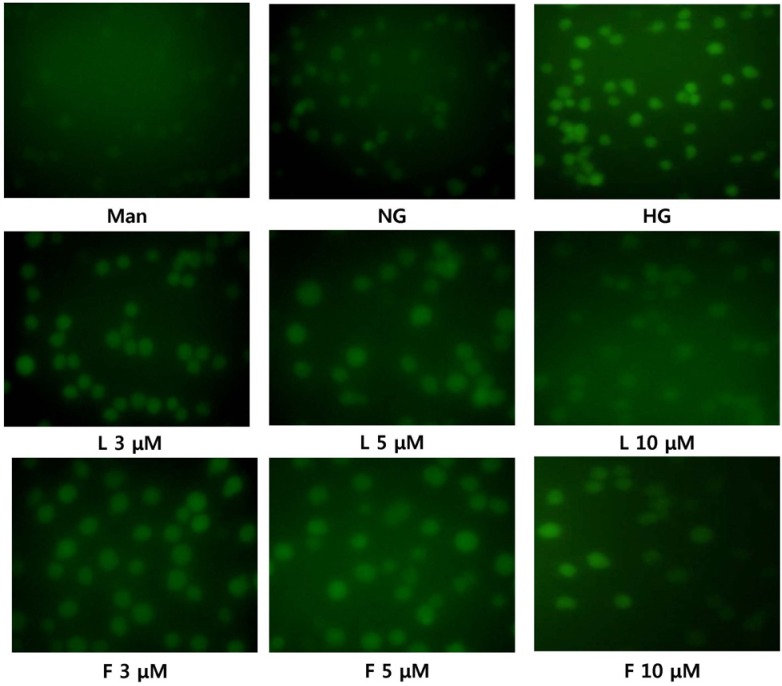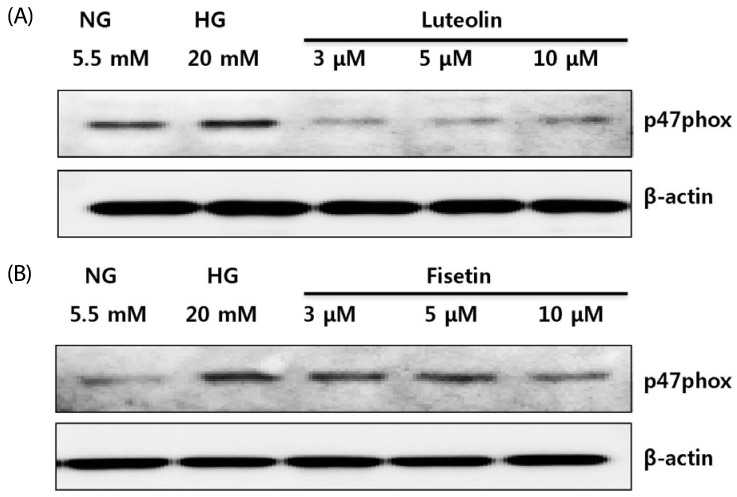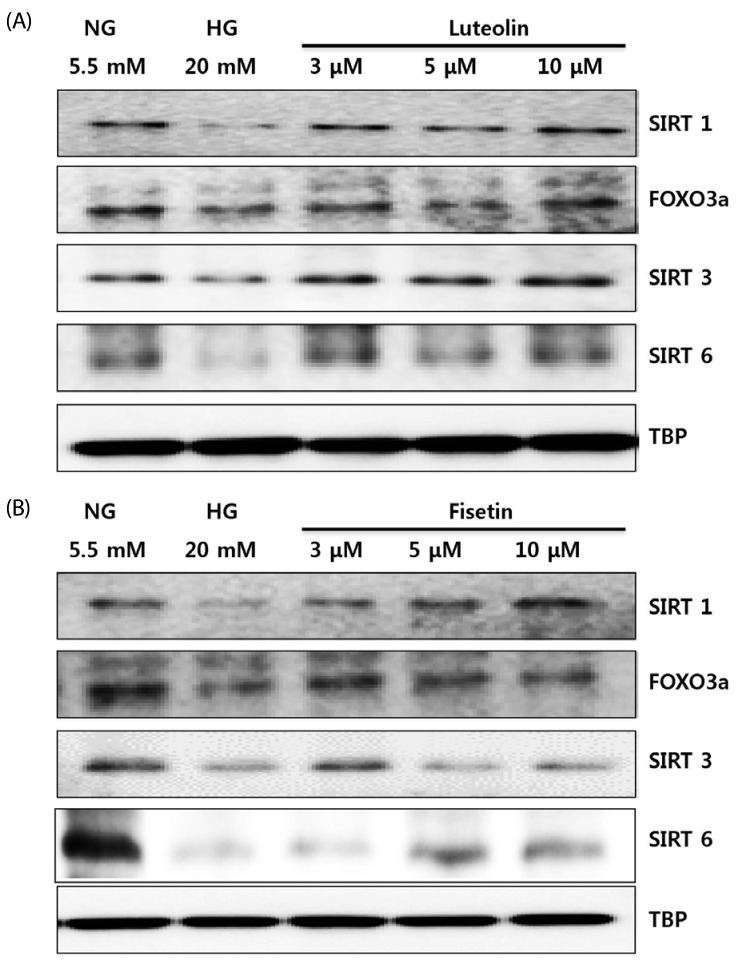INTRODUCTION
MATERIALS AND METHODS
Reagents
Cell culture and treatment
Cell viability assay
Preparation of nuclear and cytoplasmic lysates
Western blot analysis
Intracellular H2O2 staining
Statistical analysis
RESULTS
Cytotoxicity of luteolin and fisetin on monocytes exposed to hyperglycemic conditions
 | Fig. 1Cytotoxicity of fisetin and luteolin under HG conditions.Effect of fisetin and luteolin on cell viability after 48 h was evaluated by the CCK-8 assay. Human monocyte THP-1 cells (4 × 103 cells/well) were cultured under normoglycemic (NG, 5.5 mM/L glucose) or hyperglycemic (HG, 20mM/L glucose) conditions in a 96-well plate. Cells were treated with 3, 5 and 10 µM luteolin and fisetin for 48 h. Results are shown as mean ± SE of three independent experiments.
|
Evaluation of luteolin and fisetin effects on O2- production in hyperglycemic conditions using immunofluorescence assay
 | Fig. 2Effects of luteolin and fisetin on O2- production in HG conditions by immunofluorescence.Cells were treated with appropriate concentrations of the phytochemicals, and fixed with 10% formaldehyde. The signal quantification was assessed by ImageJ software; magnification ×400. Man, mannitol condition; NG, normoglycemic condition; HG, hyperglycemic condition; L, luteoline; F, fisetin.
|
Effect of luteolin and fisetin on p47phox expression in hyperglycemic conditions
 | Fig. 3Effects of luteolin and fisetin on p47phox expression in HG conditions.Cells were treated with 3, 5 and 10 µM luteolin (A) and fisetin (B) for 48 h. Protein levels were evaluated by western blot for p47phox. Equal loading of protein was confirmed by stripping the immunoblot and reprobing for β-actin protein. The immunoblots shown here are representative of three independent experiments. NG, normoglycemic condition; HG, hyperglycemic condition.
|
Luteolin and fisetin treatments increase the expression levels of SIRTs and FOXO3a in HG-induced THP-1 cells
 | Fig. 4Effects of luteolin and fisetin on SIRTs and FOXO3a gene expression under HG conditionsCells were treated with 3, 5 and 10 µM luteolin (A) and fisetin (B) for 48 h. Protein levels were evaluated by western blot for SIRT1, SIRT3, SIRT6 and FOXO3a. Equal loading of protein was confirmed by stripping the immunoblot and reprobing for TATA binding protein (TBP). The immunoblots shown here are representative of three independent experiments. NG, normoglycemic condition; HG, hyperglycemic condition.
|




 PDF
PDF ePub
ePub Citation
Citation Print
Print


 XML Download
XML Download